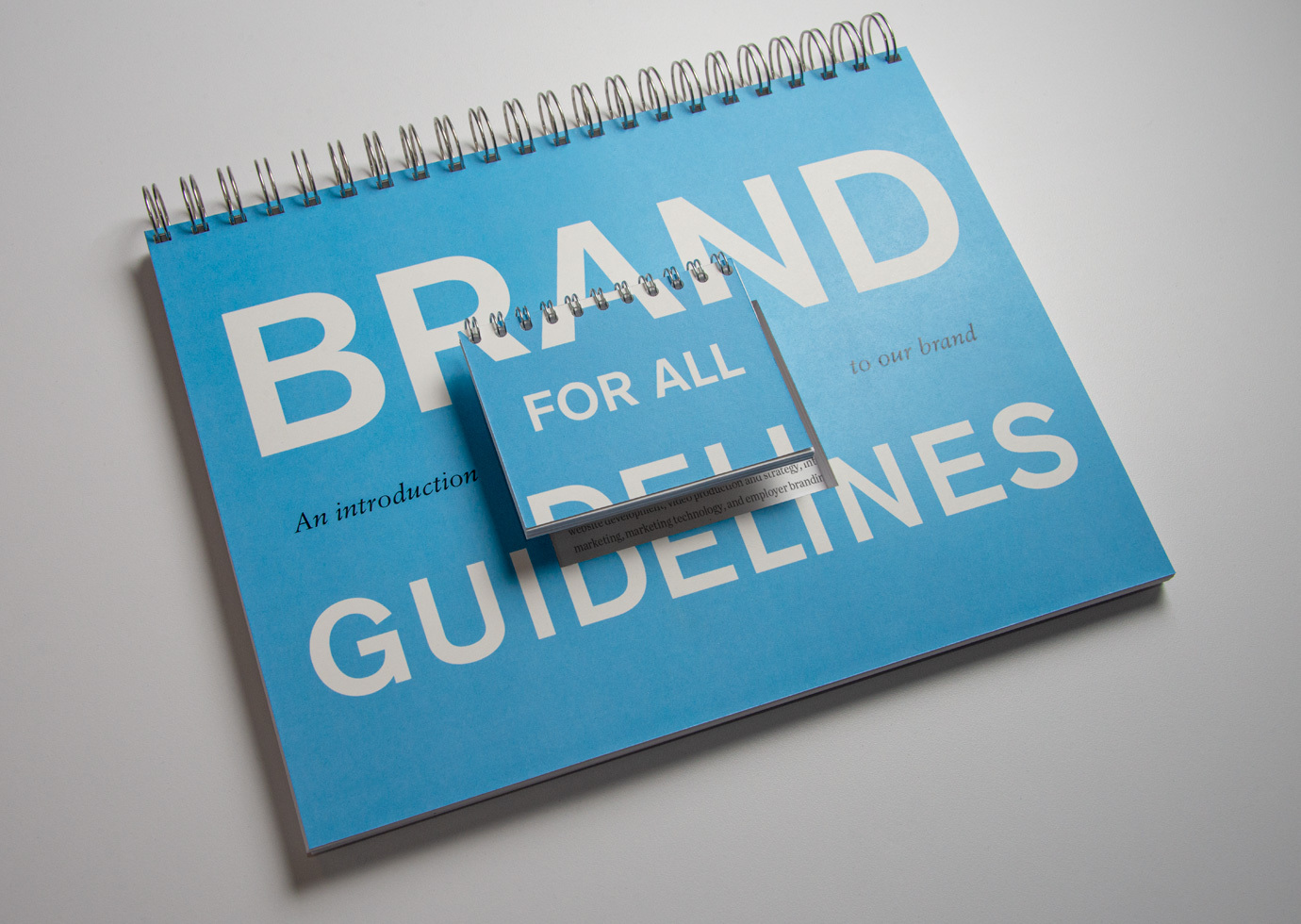Go beyond the traditional brand style guide
There’s a better way to educate your whole company about its brand.

Most companies, midsize and up, have brand guidelines: documents that provide specs on visual identity elements, including logo, color, font, graphics, and photographic style. The best of these documents also provide guidelines for the brand strategy (positioning, attributes, pillars) and the verbal identity (tone of voice and messaging). These traditional brand standards manuals are primarily used by in-house designers, writers, and marketers as well as by the external creative resources they hire. And rightly so. These documents provide important details that ensure a brand identity is correctly and consistently implemented in perpetuity.
But formal brand guidelines aren’t meaningful or useful to the majority of a company’s employees. In fact, they are never seen by most of them. Yet many of these people use the brand every day. Anyone involved in sales or client support — even firm executives — are using branded materials, writing emails, and creating slide decks. At companies where marketing and brand governance haven’t been a priority, these folks may even be developing higher profile applications, like printed collateral and e-marketing campaigns, on their own. If they haven’t been properly educated on the brand — if they haven’t bought into it — chances are, they will create or write something off brand.
Mistakes like this will erode the brand and its power as a sales tool, and the impact that can have on a company is significant. In a 2019 Lucidpress survey of B2B, B2C, and mixed organizations, 81% of companies stated they experienced production of off-brand content on some level — and 61% said that they knew of individuals who (either intentionally or unintentionally) created rogue content within the past year. The top two ways these companies suffered were confusion about their organization in the market and damaged reputation or credibility.
So what’s the solution? Consider going beyond traditional brand standards manuals and create a companion piece (a “brand book”) that makes the what, why, and how behind your brand more accessible to non-marketers.
Here’s how to create an effective brand book:
1. Write it in a conversational tone and plain language.
Everyone is busy, so you’ll need to get your ideas across quickly and clearly. Write the book as if you were talking about the brand to a co-worker — keep the tone light and the language simple. Don’t use marketing terms or concepts they won’t understand.
2. Define the jargon.
When you do use technical terms, provide clear definitions up-front. Chances are, most of your co-workers have never learned about branding. So start with the basics. Explain that your company’s brand is the image that comes to mind when a client or customer thinks of your company. And that your brand identity is a way to help control that image.
3. Explain the why.
Sometimes branding feels arbitrary and thus frivolous to non-marketers. But if your brand identity was developed properly, it’s packed with meaning. Use the brand book to explain that meaning. Show how the graphics and editorial elements directly represent your company’s values, attributes, and pillars. Show how the brand identity and voice have been carefully crafted to resonate with your target audiences. If your colleagues understand the “why” behind the branding, they will be much more likely to embrace and respect it.
4. Show employees what’s in it for them.
People are more likely buy into your branding if they know that it will help them do their job better. Include a section that lays out the ways a strong, consistent brand will save them time and money, and how it serves as a powerful sales tool for their department materials, sales pitches, or candidate interviews. Depending on their role, putting the brand identity to work can mean more money in their own pockets, and what’s more motivating than that?
5. When it comes to specs, provide only what is needed.
The employees receiving your brand book aren’t designers, writers, or marketers, so they won’t understand detailed specifications. Carefully consider the brand elements these non-marketers do need to know, and then use non-technical language to clearly explain what they are and how to use them properly. At the end of the day, the most important thing you can convey here is that on-brand communications are best left to professionals. Let them know what resources are available to them and who they should contact.
6. Choose a format that will get noticed.
Is your company paperless? Make the brand book a well-designed PDF in landscape format so that it can be digested on a laptop or tablet. Are your company’s employees bombarded with electronic communications, most of which they don’t read? Make your brand book a printed piece that can be desk dropped. Design it in a format that encourages them to keep it on their desk for regular reference. However, if your firm is like most, you’ll need it in multiple formats — print, electronic, even live content on your Intranet — so that folks can digest it in whatever way suits them best.
7. Make a big deal out of it.
If the brand book just sits on a shelf or server without being used, it’s obviously not going to be effective. When ready to distribute it, hold lunch-and-learns to explain it in person. Get it on the agenda at your next internal town hall. Make sure it becomes a part of new-hire orientation and training.
When your brand is used consistently by your entire company, the results set everyone up for success. It saves time and money; employees don’t need to reinvent the wheel every time they need materials. It harnesses the company’s institutional best practices, which went into establishing the brand. And it’s self-fueling: the more the brand is used externally, the more brand recognition you gain, making your sales and marketing teams’ jobs easier.